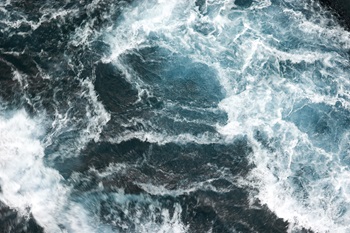Supporting Tidal Energy: Met-Ocean Design Conditions in the Pentland Firth
The Pentland Firth in the north of Scotland is one of the most energetic marine sites in Europe, with tidal currents reaching velocities of up to 12 knots (more than 22 km/h). That makes it highly attractive for tidal energy projects.
The Pentland Firth in the north of Scotland is one of the most energetic marine sites in Europe, with tidal currents reaching velocities of up to 12 knots (more than 22 km/h). That makes it highly attractive for tidal energy projects. However, the site is also exposed to severe wave conditions, making it a very challenging environment for such activities. Detailed knowledge of the local Met-Ocean conditions is required to ensure the reliability of any planned tidal devices.
 The MeyGen tidal stream project plans to build a 398MW tidal turbine array - generating the equivalent electricity to power 400,000 homes - in the Inner Sound of the Pentland Firth. In order to ensure that the foundations and turbine superstructure are not over- or under-designed, MeyGen Ltd. commissioned DHI to provide design criteria, fatigue and operational Met-Ocean data for four locations at the project site.
The MeyGen tidal stream project plans to build a 398MW tidal turbine array - generating the equivalent electricity to power 400,000 homes - in the Inner Sound of the Pentland Firth. In order to ensure that the foundations and turbine superstructure are not over- or under-designed, MeyGen Ltd. commissioned DHI to provide design criteria, fatigue and operational Met-Ocean data for four locations at the project site.
The study observed severe wave-current interaction occurring in the area. This occurs when tidal currents are sufficiently strong enough to alter the characteristics of the wave climate. In conditions where tidal currents oppose the waves, extremely steep waves are produced. DHI were able to simulate this process and capture waves of similar steepness to the field measurements.
DHI’s results will be used by MeyGen Ltd to further optimise their turbine design and make sure their structures are able to withstand the harshest conditions expected in their design lives. Moreover, turbine installation can be planned to maximise safety and minimise cost and downtime. Deployment of the first units is planned to commence in 2014.
Read more